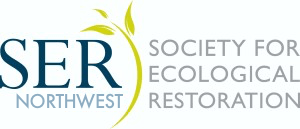
SER-NW Webinar: Tulalip Tribes – Sustaining Foods and Medicines on Treaty Lands
The swədaʔx̌ali co-management area did not happen overnight. It was one result of a committed and sustained effort by the Tulalip Tribes to develop a model for improved government-to-government relations and partnerships on the Mt. Baker-Snoqualmie National Forest (MBS). Dialog over three years with the U.S. Forest Service culminated in the signing of the first tribal Memorandum of Agreement (MOA) on the Mt. Baker-Snoqualmie National Forest in 2007. As our relationship with the Forest Service grew under our MOA, so too did the breadth of projects undertaken. The designation of the “swədaʔx̌ali Co-Stewardship Area” in 2011 was one such addition. At that time, the concept of shared management with treaty tribes was still relatively new on national forest lands, and generally met with resistance by federal managers. While the Forest Service was willing to direct Tulalip to areas they believed might serve tribal purposes on the forest, designation of areas to be co-managed with Tribes was not in the forefront of agency thinking. Since the area’s formal designation, and in coordination with Forest Service, Tulalip has guided the management of this special area based on tribal values and ecological knowledge, and in direct support of the treaty, cultural, spiritual, subsistence and educational needs of our membership and our future generations.
This presentation will provide additional information on the purpose of this co-management area, describe our on- the-ground work as well as some early monitoring results and climate change implications. Libby Halpin Neson is a Senior Environmental Policy Analyst with the Tulalip Tribes since 1990. For the last forty years, she has worked on a wide range of environmental and tribal self-governance issues, both domestic and international. Libby was instrumental in the development of Tulalip’s Government-to-Government Memorandum of Agreement with the U.S. Forest Service and the designation of the swedaxali Co-Stewardship Area. She continues to oversee its implementation.

